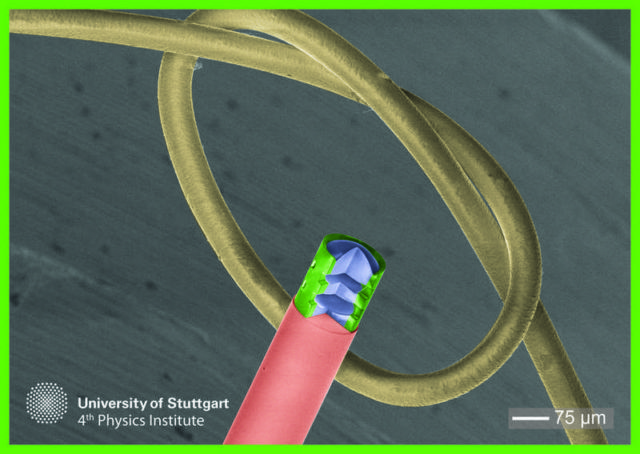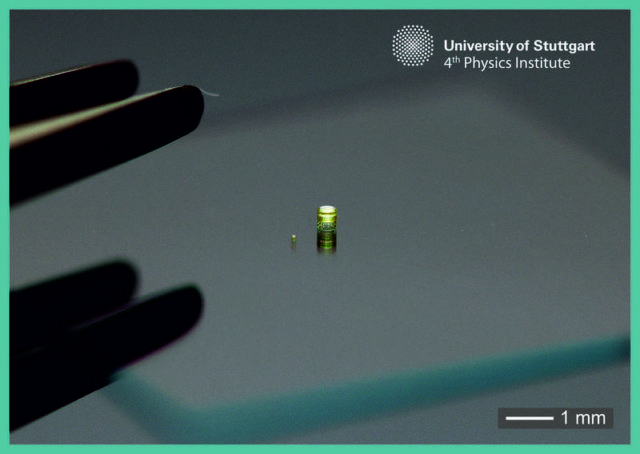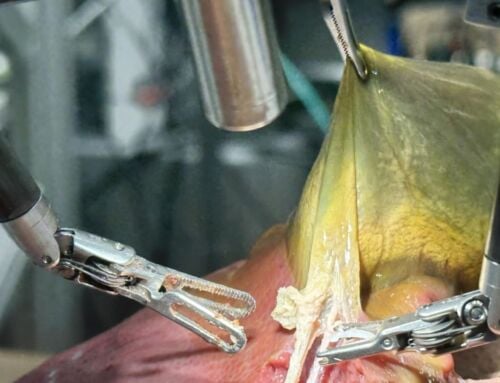This microscopic camera could help scientists in medical diagnoses, or to autonomous mini-robots.
Scientists at the University of Stuttgart in Germany, have created a camera so tiny it can be injected into your body through a syringe.
Above, the 3D printed micro-lens mounted on a fiber optic cable, compared to a human hair. Credit Timo Gissibl
By using a “femtosecond direct laser writing system,” they 3D printed a lens, the size of a grain of salt, onto the end of a fiber optic cable, that has the width of two human hairs.
3D printing revolutionized the manufacturing of complex shapes in the last few years. Using additive depositing of materials, where individual dots or lines are written sequentially. Even the most complex devices could be realized fast and easy. This method is now also available for optical elements. Researchers at University of Stuttgart in Germany have used an ultrashort laser pulses in combination with optical photoresist to create optical lenses which are hardly larger than a human hair.
A tiny lens .01 millimeter wide. Credit Timo Gissibl
via engadget







Leave A Comment